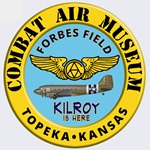Hobby Master HA2422 Soviet Mikoyan-Gurevich MiG-15bis "Fagot" Fighter - "Red 1016", Combat Air Museum, Topeka, Kansas (1:72 Scale)
"I hit this Sabre so hard that it disintegrated. Pieces of its right wing ripped away from the aircraft, and its vertical stabilizer also tore apart. The Sabre began to spin and plunged to the ground."
- Russian ace Colonel Yevgeni Pepelyayev
 The spectacular MiG-15 fighter used a combination of Russian ingenuity and "borrowed" advanced European aviation technology to become one of the most famous aircraft designs of its era. Called the "aircraft-soldier" by Russian pilots, the aircraft was exceptionally strong and dependable. The MiG-15 is still respected for its speed, maneuverability and firepower; advantages that made it a worthy adversary of the North American F-86 during the Korean War.
The spectacular MiG-15 fighter used a combination of Russian ingenuity and "borrowed" advanced European aviation technology to become one of the most famous aircraft designs of its era. Called the "aircraft-soldier" by Russian pilots, the aircraft was exceptionally strong and dependable. The MiG-15 is still respected for its speed, maneuverability and firepower; advantages that made it a worthy adversary of the North American F-86 during the Korean War.
The Mikoyan and Gurevich (MiG) design team utilized captured German technology when developing the layout of the MiG-15. The plane's 35 degree swept wing, fuselage mounted engine and clean lines gave the aircraft exceptional performance. Powered by a unlicensed copy of the famous British Nene centrifugal flow jet engine, the MiG-15 was capable of speeds up to Mach .934. The initial prototype, the I-310, made its first flight in December 1947 and won a fly-off against the Lavochkin La-15. The MiG-15 went into production and entered front line service in 1949.
Shortly after its introduction the MiG-15 entered combat over Korea. Flown by Russian, North Korean and Chinese pilots, the swept wing MiG fighter terrorized U.S.A.F. B-29 bombers flying strategic bombing missions over North Korean cities. The MiG-15's speed, maneuverability, and heavy armament (two 23mm and one 37mm cannon) allowed it brush aside escorting fighters and rip through the B-29 formations. B-29 losses to MiGs reached such high levels that the U.S.A.F. stopped daylight B-29 bombing raids and flew all strikes under the cover of darkness. Although several MiG-15s were brought down by B-29 gunners and other U.N. aircraft, only the North American F-86 Sabre was the MiG-15's equal in combat. The MiG's combat success and its dependability made the plane very popular with Eastern Bloc and Communist nations around the world. Since 1950 roughly 7,500 MiG-15s have been built in Russia, Poland, Czechoslovakia, and China. In addition to the Korean War, the MiG-15 has been used extensively as an air defense fighter, an air superiority fighter, a ground attack aircraft and reconnaissance fighter in a number of conflicts in the Middle East and the Orient.(courtesy Cavanaugh Flight Museum).
Pictured here is a 1:72 scale replica of a Soviet Mikoyan-Gurevich MiG-15bis "Fagot" fighter currently on display at the Combat Air Museum in Topeka, Kansas.
Now in stock!
Dimensions:
Wingspan: 5-1/2-inches
Length: 6-inches
Release Date: October 2024
 Historical Account: "Historically Speaking" - The Combat Air Museum is a non-profit aviation museum at Topeka Regional Airport (Forbes Field) in Shawnee County, near Topeka, Kansas. The museum is dedicated to the creation of facilities and resources for the education of the local and regional communities through the collection, preservation, conservation and exhibition of aircraft, information, artifacts, technology and art associated with the military aviation history of the United States.
Historical Account: "Historically Speaking" - The Combat Air Museum is a non-profit aviation museum at Topeka Regional Airport (Forbes Field) in Shawnee County, near Topeka, Kansas. The museum is dedicated to the creation of facilities and resources for the education of the local and regional communities through the collection, preservation, conservation and exhibition of aircraft, information, artifacts, technology and art associated with the military aviation history of the United States.
In the autumn of 1976, the Combat Air Museum in Topeka, Kansas organized as a wing of David Tallichet's Yesterday's Air Force (YAF). In 1979, the group reorganized as the "Combat Air Museum," relocating to Forbes Field Hangar #602.






